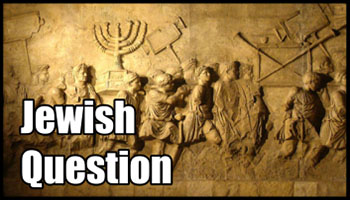Description
By Arthur Kemp. Subtitled “DNA, History and the Right to Existence of the Native Inhabitants of the British Isles,” this work combines the most up-to-date genetic research and the established historical record to conclusively prove that:
(a) There is a clearly definable indigenous population in Britain;
(b) That, in terms the United Nations Charter on the Rights of Indigenous Peoples and other internationally accepted conventions protecting the rights of indigenous peoples, the British people qualify fully for protected status; and
(c) That this United Nations Organisation-mandated protection specifically includes the right of the British people to be protected from the destruction of their identity through mass immigration, integration or genetic assimilation.
The genetic make-up of the British people is then discussed, including an easy-to-understand explanation of
– How people can be identified and linked to specific areas using modern genetics;
– How genetic evidence shows that the vast majority—between 70 and 80%—of all British people have ancestors going back to the end of the last mini-ice age;
– How genetic evidence shows that the Celtic, Roman, Viking/Danish and Norman conquests had almost negligible impact upon the British people;
– How genetic evidence has shown that even the much-reputed Anglo-Saxon invasions did not cause any mass population replacement within the British Isles.
Next, this work reviews the claims for Indigenous status of four of the most well-known indigenous peoples of the world: the Mãori in New Zealand, the Aborigines in Australia, the Tibetan people in Tibet and the Indians in North America. All of these people either have officially protected status, or, in the case of the Tibetans, are the subject of international campaigns to ensure their right to self-determination and protection against assimilation and physical overwhelming by the Han Chinese.
Finally, this book shows how, in terms of the UN definitions used to define the indigenous status of these four above-mentioned study groups (specifically their genetic unity, and the length of time they have been resident in their own territories before the advent of foreign settlers), the British people qualify several times over for protected status.
In fact, the British people have been resident in their own territory for thousands of years, as compared to, for example, the Mãoris, who have been resident in New Zealand less than 800 years.
It concludes by pointing out that the current mass Third World immigration invasion of Britain (and indeed, all of Europe) is therefore a contravention of all the internationally accepted declarations on the rights of indigenous peoples.
Contents
Section One: Introduction
Section Two: Indigenous People — A Definition
Section Three: Haplogroups and the Identification of Peoples
Section Four: Haplogroups Found in Britain (Prior to Modern Third World Immigration)
Section Five: A History of the Populating of Britain
Section Six: The Rights of the Indigenous People of Britain
Bibliography
Appendix 1: The “Black-Skinned” Cheddar Man Hoax
Appendix 2: The “Multi-Ethnic Ancient London Lie”
Index
Image captions
The United Nations has a Permanent Forum on Indigenous Issues; mtDNA Haplogroups of the World; Y Haplogroups of the World ; Y Haplogroups of Europe; Y Haplogroups of the British Isles; Distribution of the R1b Y-Chromosome haplogroup, expressed as a percentage of the total Y-Chromosomes in each region; mtDNA haplogroups of Europe; Y Haplogroups, Europe 18,000 Years Before Present (YBP); Europe circa 8000 YBP, showing the route of the Neolithic era migrations into Europe from the Middle East; Europe 12,000 YBP showing how the haplogroups R1b, I and R1a spread northwards following the final end of the last ice age; The “Red Lady of Paviland” skeleton exhibition in the National Museum in Cardiff; Cheddar Man, as he was found in the Cheddar Gorge, Mendip, Somerset; The Stonehenge Archer; The Amesbury Archer; A reconstruction of the head of Lindow Man; A reconstruction of a Viking settlement in York; The 1066 Norman invasion fleet (Bayeux Tapestry); In 1596, Queen Elizabeth I ordered the first mass expulsion of Africans from England; A classic tourist image of a Mãori from New Zealand; A group of Australian Aborigines perform a ritual dance ; The people of Tibet; A photograph of the famous nineteenth century Apache chief Geronimo who fought Mexican and white American expansion into his lands until his capture in 1905; A recent photograph of a group of Amazonian Indians; Newspaper claims Cheddar Man was “black”; New Scientist Magazine: Cheddar Man Claim Untrue; BBC claims “London ethnically diverse from the start.”; A coin depicting Hannibal, issued in Carthage, ca. 213-210 BC.
88 pages Paperback.



























